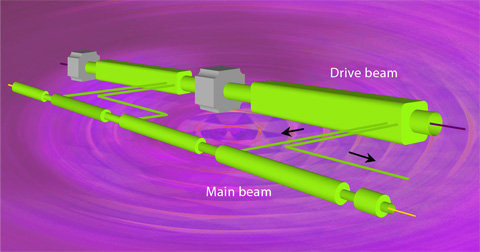Related links
- The CLIC study website
This website is no longer maintained. Its content may be obsolete. Please visit http://home.cern for current CERN information.

With an eye on the future, scientists at CERN are pursuing advanced accelerator research and development for a machine to exploit the LHC’s discoveries at the high-energy frontier. In the Compact LInear Collider (CLIC) study, an international collaboration is working on a concept for a machine to collide electrons and positrons (anti-electrons) head on at energies up to several TeV. This energy range is similar to the LHC’s, but by using electrons and their antiparticles rather than protons, physicists will gain a different perspective on the underlying physics.
The aim is to use accelerating radio-frequency (RF) structures and a two-beam concept to produce accelerating fields as high as 100 MV/m to reach a nominal total energy of 3 TeV, while keeping the size and cost of the project within reach. The CLIC test facility, CTF3, provides the electron beam for the studies.

In the two-beam acceleration concept, the high RF power to accelerate the main beam is extracted from a second high-intensity relativistic electron beam, the so-called ‘drive beam’ that runs parallel to the main beam. The drive beam is decelerated to provide the RF power to accelerate the main beam itself.